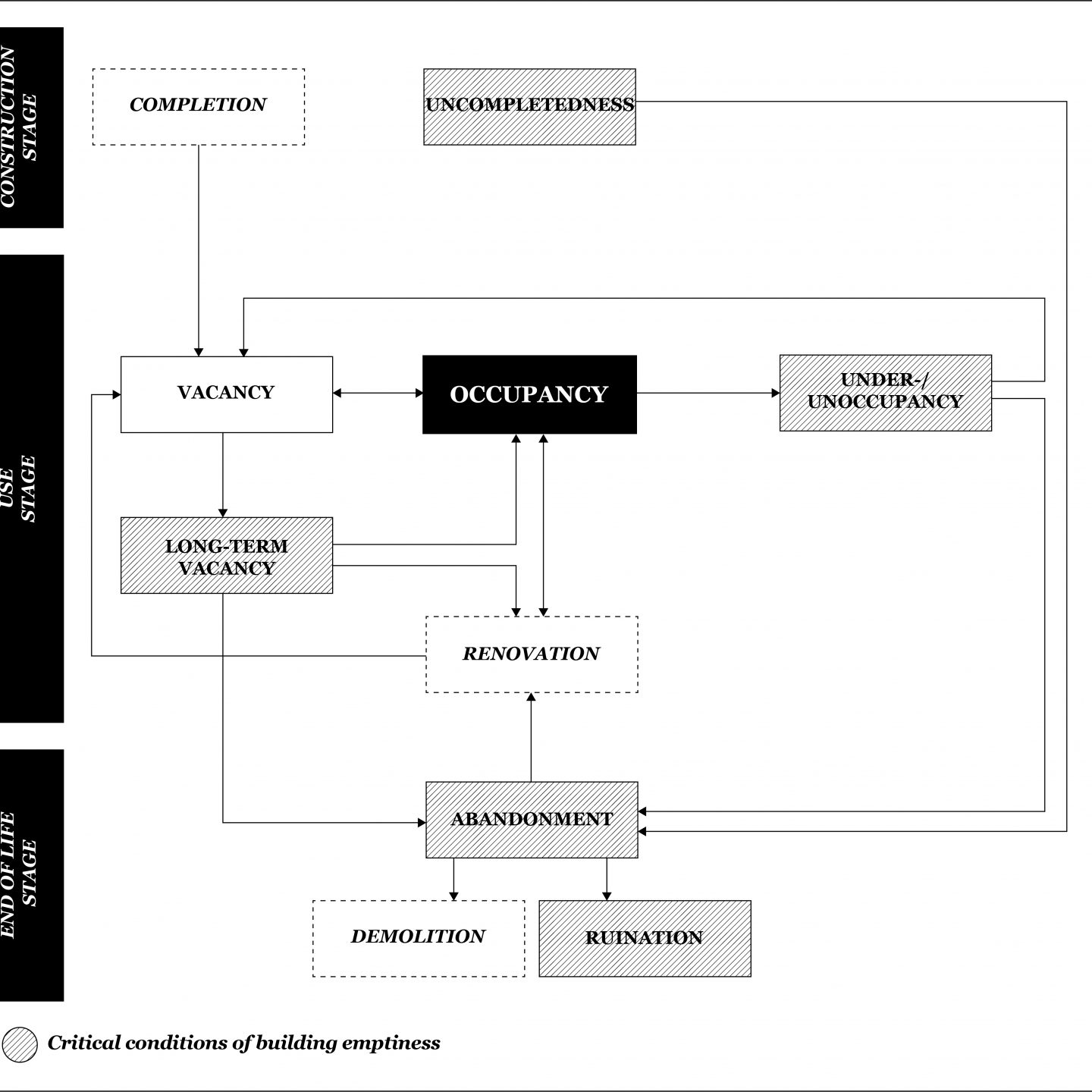The academic reflection on different manifestations of building emptiness is broad, intersecting the last sixty years of various debates on urban issues. Despite this, the conceptualisation of building emptiness and its nuances is not yet completely satisfactory. Definitions are blurred and different phenomena are often mixed. It is against this backdrop that, after a short state-of-the-art review, this paper proposes a precise conceptualisation of the main states of emptiness of housing assets. Four critical conditions are identified: i) uncompletedness, that is the condition of a building which, during the construction phase, is left unfinished; ii) long-term vacancy, that is the state of a property which remains on the real estate market for a prolonged period of time, for any reason other than the conventional circumstances of the ordinary life of a building; iii) under- and unoccupancy, which are conditions of finished properties that are not available for sale or rent and are either used occasionally (under-occupancy) or not put to any residential use (unoccupancy); iv) abandonment, that is the state of an empty building which has not been inhabited and maintained for a long time, thus being detached from the housing market due to its physical decay. Subsequently, the implications of such conceptualisation are stressed, with reference to both descriptive and normative issues. For instance, this conceptualisation could help a finer understanding of the negative externalities of different states of housing emptiness, as well as it could favour more careful ethical judgements.

